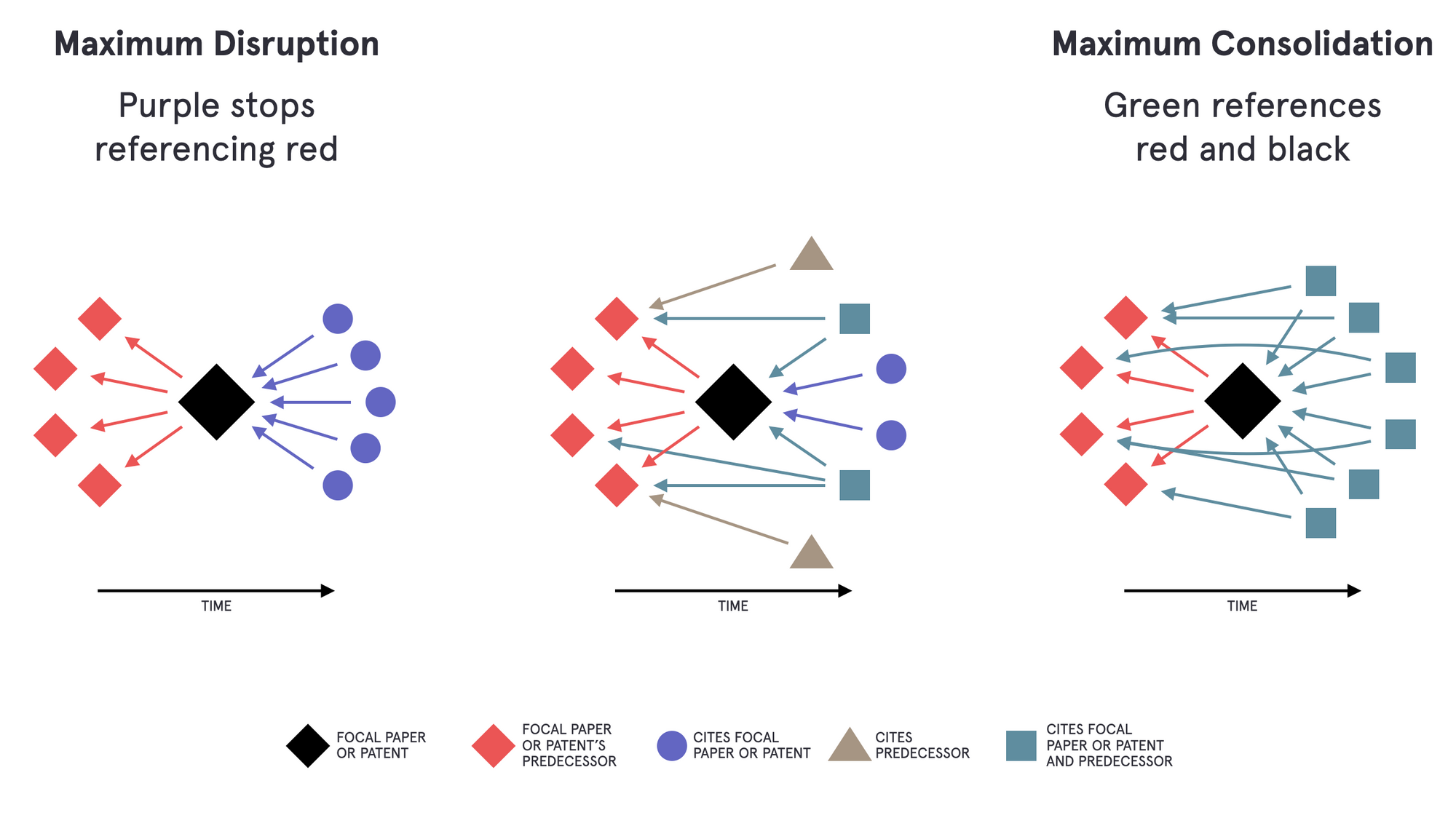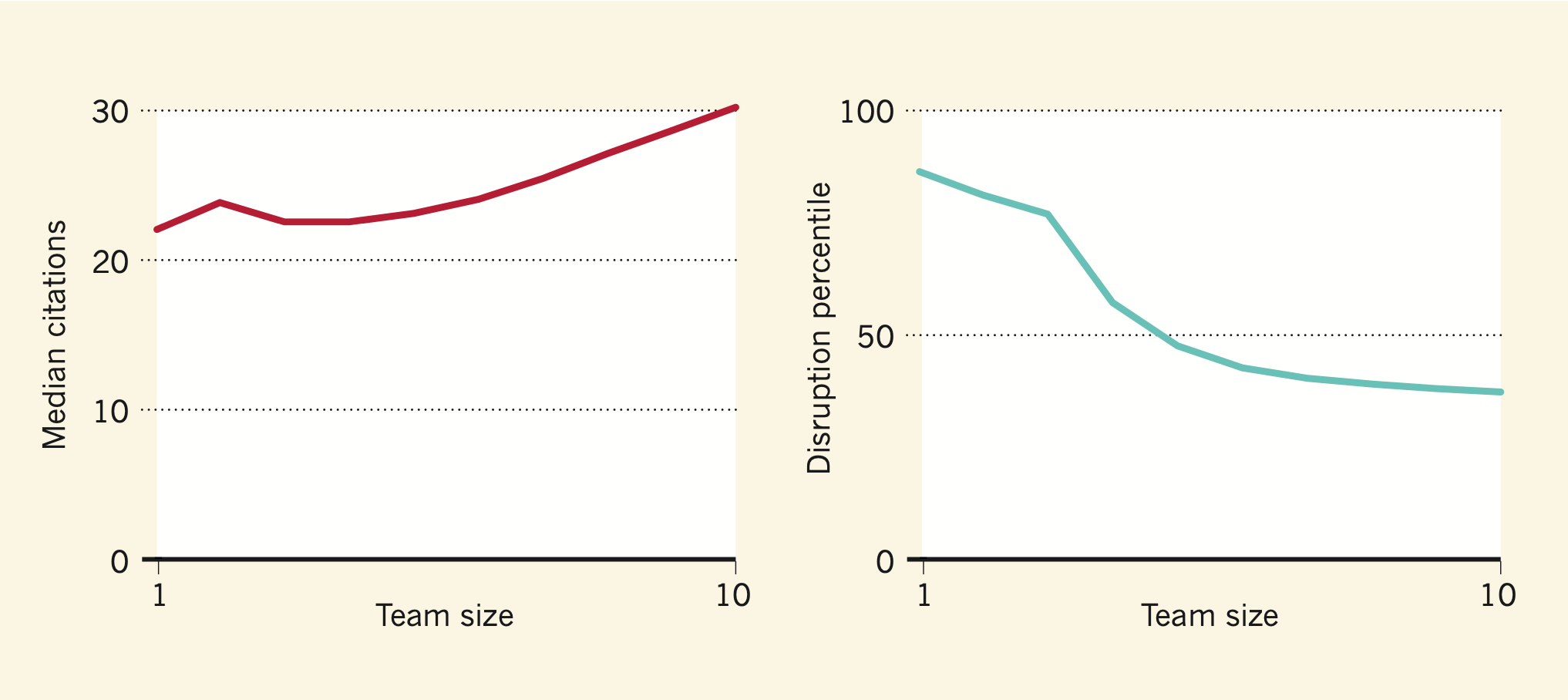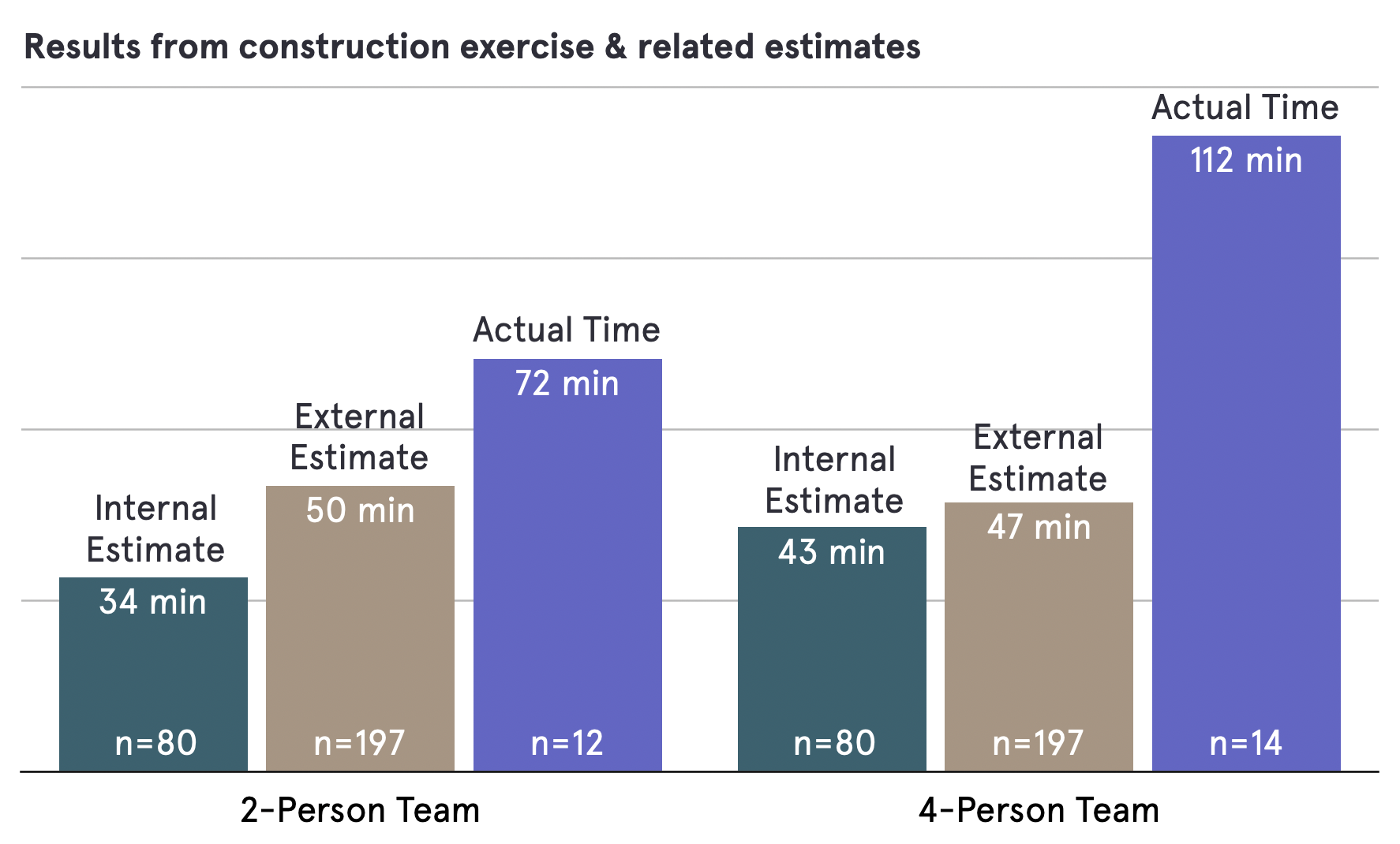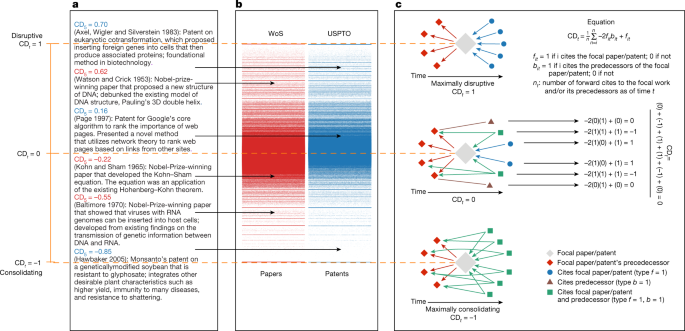Disruption is on Decline
I think it's because of org structure and approval processes. Implications for marketing organizations abound.

Disruption (in peer-reviewed journals and in patents) is on decline, and the authors don't have much of an explanation for it. Read the paper here.

I do love this definition of disruption. Put simply as possible: when a new paper or patent comes along, and everyone stops referencing its predecessors...that's disruption. And it's happening less frequently as years go by.
As a quick aside: this is also a good visualization of what happens when good "scaling practices" exist within an org. When teams invent something new and better, the rest of the org is able to find it, learn it, and start operating in a new way. This happens through hierarchy (up the chain of command and back down) or through networks (across the organization, as it happens), with upsides and downsides to each approach, but it has to happen if the organization is to get better over time.

Here are the things that the research show aren't causes for the slowdown:
- It's not that we've eliminated all the low-hanging fruit
- It's not that technology is getting worse over time
- It's not that it's isolated to a particular segment of research (it also applies to JSTOR, the American Physical Society corpus, Microsoft Academic Graph and PubMed)
- It's not due to changing publication, citation or authorship practices
What if it's due to org structure and approval processes?
Small teams are more disruptive than large teams

In this article, the author connects research from here back to a trend toward larger research teams due to the "robust correlation that exists between citation impact and team size." That is: the bigger the team, the more references you're likely to get. More references, more fame. More fame, more money.
Makes sense! We see this everywhere:
The type of work performed by large teams and small teams differs markedly, with small teams being much more likely than large teams to publish disruptive articles. This finding holds for articles, patents and computer-code snippets deposited on the web-based hosting service GitHub. It holds across all quantiles of the citation distribution. In the case of articles, it also holds across scientific disciplines, from biology to the physical sciences, as well as the social sciences.
Use small teams to disrupt, and large teams to spread.
But we also overestimate the productivity of large teams

This is a cool study on productivity estimation and team size.
Everyone is bad at estimation, but we're especially bad at estimating how much slower teams are when they get larger. And external estimators think that smaller teams are going to be slower than larger teams. (Granted, this was for putting together LEGO pieces according to a set of instructions, but I think this generalizes.)
In the corporate context, this is even more pernicious – managing larger teams means more salary and better reputation.
Peer review takes 90 days to one year (~ish), and is getting slower

This article is mostly about how publishing is getting faster. And it is in some cases. But especially for management research, it's slow and slowing. Rigor is important, but I have to think that decision-making speed is a critical ingredient in generating more and better disruptive ideas.
References






Comments